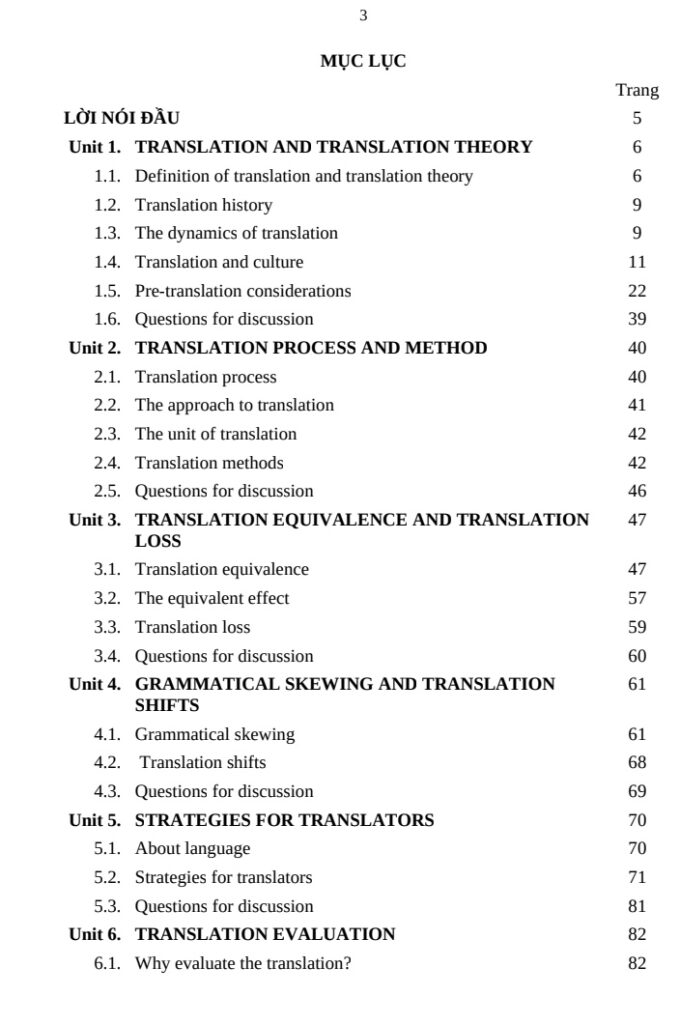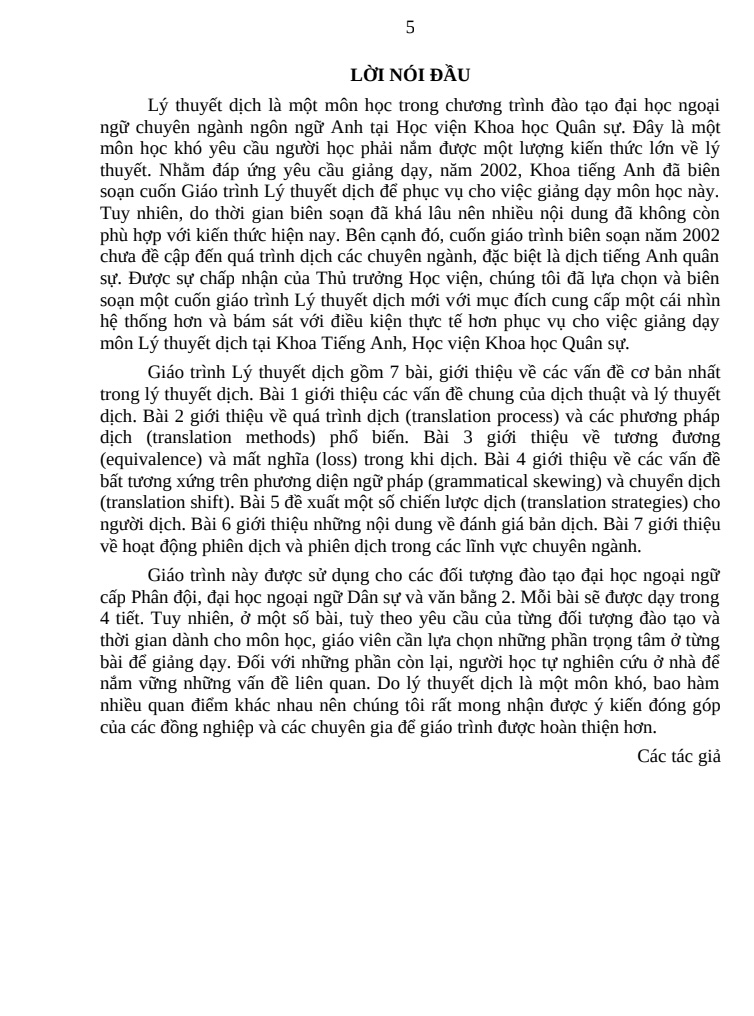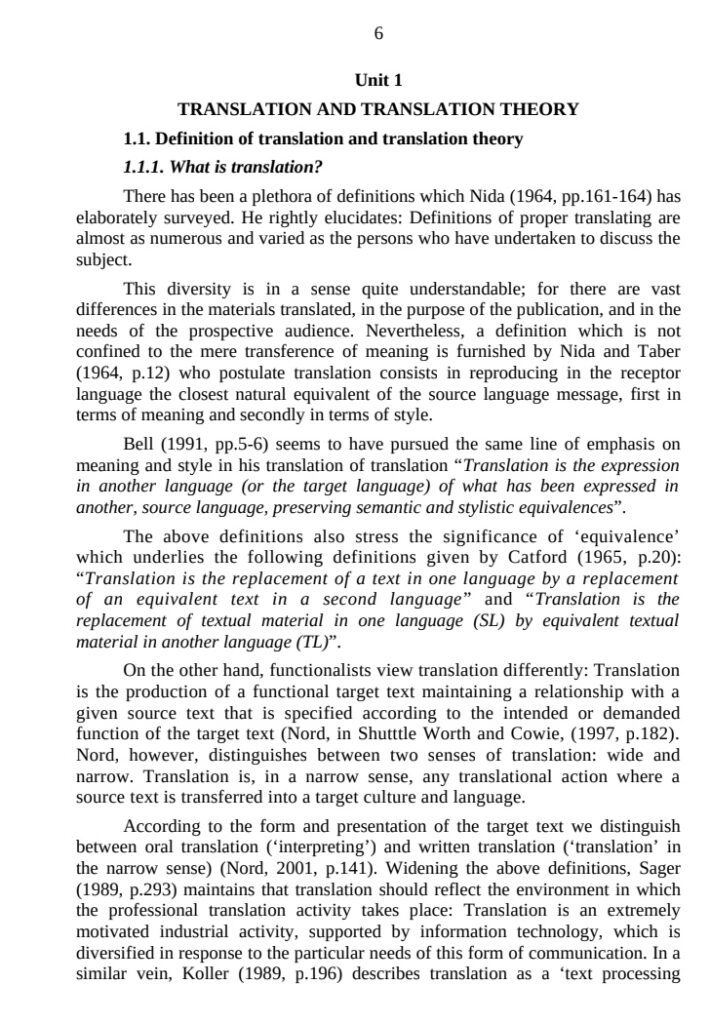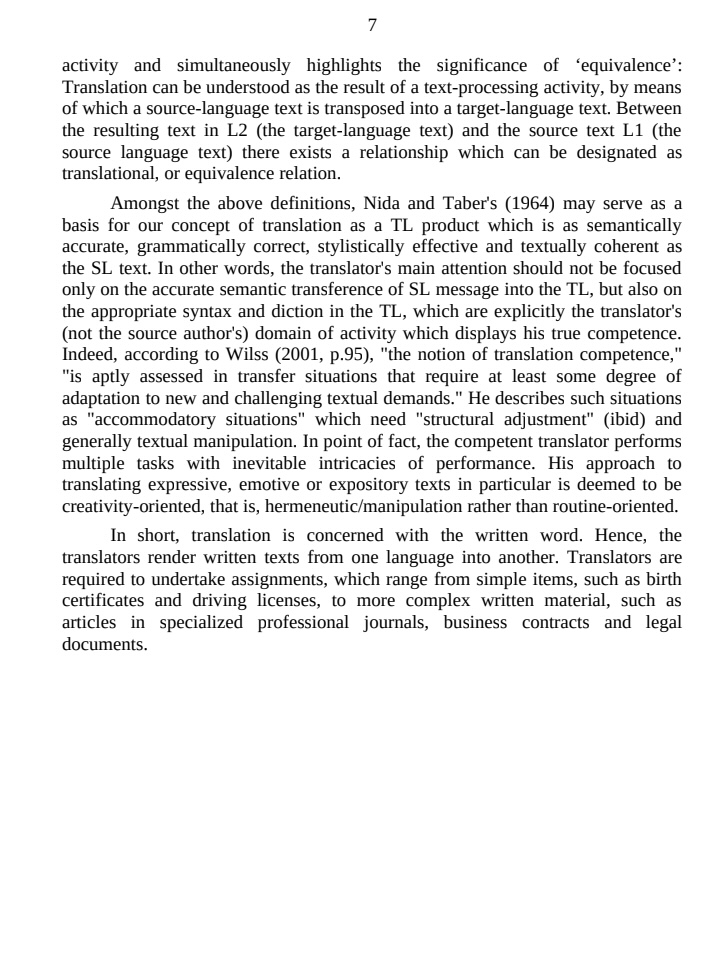TÀI LIỆU Translation and Translation Theory (Giáo trình Lý thuyết và Phương pháp Dịch) là nguồn học thuật quan trọng dành cho sinh viên ngoại ngữ, giảng viên và những ai nghiên cứu về dịch thuật. Nội dung gồm 6 chương lớn:
- Unit 1: Lý thuyết dịch và khái niệm cơ bản (định nghĩa, lịch sử, văn hóa, chuẩn bị trước dịch).
- Unit 2: Quy trình và phương pháp dịch.
- Unit 3: Tương đương trong dịch thuật & mất mát ý nghĩa.
- Unit 4: Ngữ pháp và hiện tượng dịch chuyển trong dịch thuật.
- Unit 5: Chiến lược dành cho dịch giả.
- Unit 6: Đánh giá chất lượng bản dịch.
Với phiên bản PDF đầy đủ, tài liệu giúp người học nắm vững nền tảng lý thuyết dịch, áp dụng vào thực tiễn dịch thuật, đồng thời rèn luyện tư duy phân tích và kỹ năng ngôn ngữ chuyên sâu.
Unit 1
TRANSLATION AND TRANSLATION THEORY
1.1. Definition of translation and translation theory
1.1.1. What is translation?
There has been a plethora of definitions which Nida (1964, pp.161-164) has elaborately surveyed. He rightly elucidates: Definitions of proper translating are almost as numerous and varied as the persons who have undertaken to discuss the subject.
This diversity is in a sense quite understandable; for there are vast differences in the materials translated, in the purpose of the publication, and in the needs of the prospective audience. Nevertheless, a definition which is not confined to the mere transference of meaning is furnished by Nida and Taber (1964, p.12) who postulate translation consists in reproducing in the receptor language the closest natural equivalent of the source language message, first in terms of meaning and secondly in terms of style.
Bell (1991, pp.5-6) seems to have pursued the same line of emphasis on meaning and style in his translation of translation “Translation is the expression in another language (or the target language) of what has been expressed in another, source language, preserving semantic and stylistic equivalences”.







